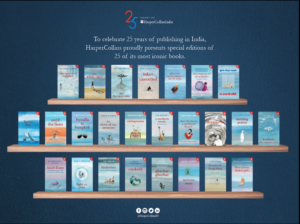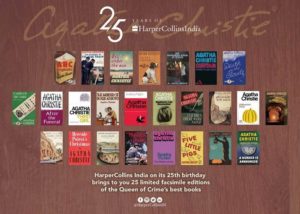Nandita Haksar’s “The Flavours of Nationalism: Recipes for Love, Hate and Friendship”
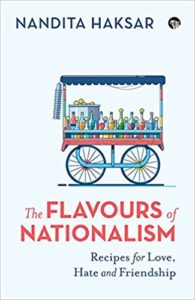 The Flavours of Nationalism: Recipes for Love, Hate and Friendship by lawyer Nandita Haksar is a unique memoir that intersperses two passions — human rights and food.
The Flavours of Nationalism: Recipes for Love, Hate and Friendship by lawyer Nandita Haksar is a unique memoir that intersperses two passions — human rights and food.
She belongs to a community of meat-eating Brahmins — the Kashmiri Pandits. Her ancestors came from Kashmir in the beginning of the twentieth century and settled in the plains of Hindustan. Very soon they forgot the culture, the rites and rituals and even the language of the Valley. The men learnt Urdu and Persian, while the women were taught Hindi and, on occasion, Sanskrit. The men greeted each other with an adaab-urz-hai but women were always greeted with a respectful namaskar. Once the Kashmiri families migrated they integrated many aspects of the cuisines of the plains, such as those of Lucknow, Allahabad and Delhi.
Nandita Haksar employs her sharp skills as a human rights lawyer to dissect cultures and bigotry. She rightly observes that ” In India, upper-caste Hindus do not inter-dine with Dalits, Muslims and tribal people, because of what they eat. Perhaps this is the distinguishing feature of Indian society and culture.” It still happens.
Later she adds ” The recent attempts to impose a ban on eating and trading beef, and the promotion of vegetarianism, have brought into focus the fact that the caste system and the ideology which sustain it is still alive. The question is how do we, who believe in democratic values and espouse liberalism, resist the imposition of this vision in our country?
The liberals, including a section of the media, have opposed the beef ban largely on the ground that it violates the human rights of an individual to choose what he or she wants to eat. However, the ban on beef is not merely a question of the violation of an individual’s right to liberty, dignity and equality. But when millions of people are collectively denied those human rights, then we need a stronger political discourse to challenge their exclusion. ”
Some years ago in an article on “Dalit Literature in English” I had written “The recent banning of beef in India also deprives Dalits of their primary source of protein. Beef is cheap and easily available. The Dalits belong to a section of society that cuts across religions. What is astounding is that the quantum ( and relentlessness) of violence against this community is impossible for any sane individual to comprehend and yet it is practised daily.” One of the fiercest responses to the article said my assessment was wrong. Banning beef would not deprive Dalits of food. I stood my ground and said it was an unnecessary hostile act not recognising a critical source of protein was being taken away from a community and probably plunging the already very poor people further into poverty and despair, but I was only scoffed at. The late Sharmila Rege’s Writing Caste, Writing Gender: Narrating Dalit Woman’s Testimonios discusses this at great length in her book. So when Nandita Haksar makes these associations and link human rights with the basic act of accessing food I agree with her 100% and only wish more people saw it in a similar fashion.
While I was writing this article, journalist M K Venu wrote on Twitter in reference to the Alwar lynchings and Muslims being repeatedly attacked by gau rakshaks that:
RSS leader Indresh Kumar, Vinay Katiyar & some BJP ministers in Rajasthan are asking Muslims not to eat beef and to avoid transporting cows even as Rakbar Khan's family seeks justice. Rajasthan Home Min instead of visiting the family calls them to circuit house. New India?
— M K Venu (@mkvenu1) July 24, 2018
The successful right to food campaign in India led to establishment of systems to ensure food security. For instance passing of the National Rural Employment Guarantee Act ( NREGA) in August 2005, the introduction of cooked mid-day meals in all primary schools following a Supreme Court order in April 2004, and finally the passing of the National Food Security Act, 2013. “But even these achievements have been undermined by the controversies over beef and vegetarianism and have served to divert public attention from the most fundamental issue: food security for the poor who cannot afford even one meal a day and the wretched condition of farmers and their families, so many of whom have been driven to committing suicide.” This crisis is related to the globalization of the food industry and the so-called safety laws that in effect criminalize the small dhabas and the street vendors who provide affordable food to millions of people. This is food fascism.
The Flavours of Nationalism: Recipes for Love, Hate and Friendship is absolutely fantastic for food is not only a repository of cultural norms, local wisdom ( in terms of what is the best dish / spice to have that would be most suitable for the person) but of course it is a rights issue too. To deny someone the right to their cuisine is a violently hostile act. At the same time to accept the local cuisine offered while travelling whether you like it or not is the height of graciousness and civil behaviour. This is exactly why the anecdote Nandita Haksar shares about her friend who is a vegetarian and yet quietly eats the meat so lovingly served to her by the host at the Hashimpura wedding celebrations was an incredibly graceful gesture upon her part.

A few days ago designer Orijit Sen posted on Facebook about eating Kozhukatta on a Kochi street. Steamed rice dumplings with a sweet core of coconut and jaggery. Immediately he had a flood of responses on his timeline talking about variations of exactly same dish. There were folks writing in from Himachal Pradesh, Assam, Bengal, and even Parsis. It was fascinating to observe how food united everyone. Orijit Sen was prompted to respond “Amidst all our diversity and contradictions, I seem to have chanced upon one of those simple beautiful things that connects us all on this subcontinent!” Something that comes across so well in Nandita Haksar’s book too — the animated conversations that involve food whether designing a wedding menu to organising a meal at home or even visiting the local gurdwara for a langar!”
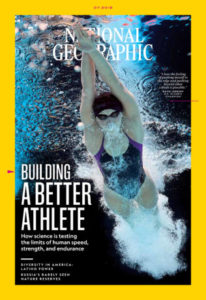 The July 2018 issue of the National Geographic’s cover story is on “Building a Better Athlete“. It is basically about how sports scientists are working closely with the finest sportsmen to help them excel known barriers of performance. In it is quoted Alan Ashley, the U.S. Olympic Committee’s chief of sport performance, who says the key to breaking performance barriers is to “keep athletes healthy. If they stay healthy, everything else falls into place.” This had me wondering why is that we only look at these frames of reference in absolutely exceptional specimens of human race and apply these rules of living for them alone? Why can we not shift these very same frames of reference and apply them to ordinary families? Won’t it be very liberating for many, especially women who are foisted with the responsibility of feeding their families, to feel that investment in their health, with local produce and that which is familiar to their cultures is perfectly acceptable and in fact a great way of living?
The July 2018 issue of the National Geographic’s cover story is on “Building a Better Athlete“. It is basically about how sports scientists are working closely with the finest sportsmen to help them excel known barriers of performance. In it is quoted Alan Ashley, the U.S. Olympic Committee’s chief of sport performance, who says the key to breaking performance barriers is to “keep athletes healthy. If they stay healthy, everything else falls into place.” This had me wondering why is that we only look at these frames of reference in absolutely exceptional specimens of human race and apply these rules of living for them alone? Why can we not shift these very same frames of reference and apply them to ordinary families? Won’t it be very liberating for many, especially women who are foisted with the responsibility of feeding their families, to feel that investment in their health, with local produce and that which is familiar to their cultures is perfectly acceptable and in fact a great way of living?
If this argument is extended to the micro-level of seeing how a family unit works. Apply it to women and see if they are taught to eat and look after themselves perhaps there won’t be so many instances of illness in many families. Off late it is not unusual to hear of instances where urban poor women are being encouraged to attend nutrition camps where they can learn how to manage household budgets by buying less and less milk as the prices skyrocket. So the women are taught how half a litre of milk can be stretched in providing nourishment value by setting curd, preserving the cream (if any) of the boiled milk etc. Or even using cheaper substitutes like soya milk. [ With today’s inflation rates I do not know if this holds true any longer!] Or adapting their old family recipes so that they do not require milk, dahi or cream as ingredients, instead they could substitute it with cheaper ( not necessarily healthier) ingredients. This is a horrific act of violence being perpetrated under the garb of nutrition camps for in the process of managing household budgets women are being forced to forget skills they have acquired / inherited and instead adapt to the local requirements. This is undoubtedly an inherent act violence as the woman is inadvertently put under familial/ economic pressure to provide regular sumptuous meals despite spiraling costs of ingredients and since she is mostly voiceless these acts go unnoticed. It is a very complicated and insidious act of violence that gets slowly embedded and perpetuated in the long run.
The scrubbing away of collective memories of local cuisines that define a community and are more importantly repositories of information about ideal foods to be consumed in different seasons using local ingredients, ensuring the people remain healthy and it is also cost effective in the long run. This is echoed in film director Jean Renoir sharing in his memoir ( Renoir, My Father ) about his father, the Impressionist painter Renoir, describing the varied smells coming from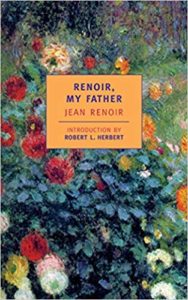 different houses in their neighbourhood. Every fragrance was that of a distinct region of France and easily identifiable but now both father and son were ruing the fact that dishes and flavours had more or less become homogenised. They were referring to the homogenity of smells but the passage in the book also is a wistful reminiscing of how much has been lost in the name of progress — the standardisation if you will of French cuisine. It is much like the different knowledge systems and the value accorded to them as Nandita Haksar mentions in reference to the two young boys of her acquaintance — Ashwin Mushran and Adani. Her nephew 18-year-old Ashwin is unable to make her a cup of hot coffee but is able to write a remarkable 10,000-word essay on Tolkien! Whereas 10-year-old Adani, her host’s son on a field trip to the north east of India, had not only killed a bird with his sling, but plucked and cooked it as well as made rice to accompany it — all in the short duration she took to get refreshed after a long journey!
different houses in their neighbourhood. Every fragrance was that of a distinct region of France and easily identifiable but now both father and son were ruing the fact that dishes and flavours had more or less become homogenised. They were referring to the homogenity of smells but the passage in the book also is a wistful reminiscing of how much has been lost in the name of progress — the standardisation if you will of French cuisine. It is much like the different knowledge systems and the value accorded to them as Nandita Haksar mentions in reference to the two young boys of her acquaintance — Ashwin Mushran and Adani. Her nephew 18-year-old Ashwin is unable to make her a cup of hot coffee but is able to write a remarkable 10,000-word essay on Tolkien! Whereas 10-year-old Adani, her host’s son on a field trip to the north east of India, had not only killed a bird with his sling, but plucked and cooked it as well as made rice to accompany it — all in the short duration she took to get refreshed after a long journey!
The Flavours of Nationalism: Recipes for Love, Hate and Friendship is meant for those who love social and family histories; love cooking; love reading recipes and collecting them too. It is also meant for those who cherish an India which celebrates its diversity and the richness of its varied local cultures that are embraced willingly by its citizens, irrespective of which region or community they hail from. This is the idea of India most citizens believe in!
Read this book. It is unforgettable!
Buy the paperback edition and Kindle edition.
24 July 2018






